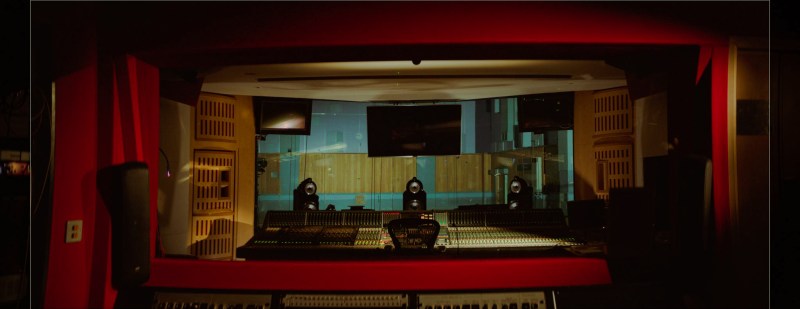Mary McCartney takes us inside the walls of Abbey Road Studios for her feature directorial debut, If These Walls Could Sing.
The film premiered during Labor Day weekend at the Telluride Film Festival. Over the years, the fest has become a mecca for studios to launch their Oscar contenders. In any event, Disney is using the opportunity to launch the Abbey Road documentary. If you’re not launching a musical doc at SXSW, Telluride is the next best place. I cannot say enough good things about the film. It’s got everything you want–at minimum–in a documentary about Abbey Road Studios: the beginnings, The Beatles, and of course, John Williams recording some of the greatest film soundtracks of all time.
I was first introduced to Abbey Road when The Beatles Anthology first aired on ABC. In fact, Sgt. Pepper’s and Abbey Road subsequently became my first two albums ever purchased. There’s no telling just how many albums I own were recorded inside the walls of Abbey Road Studios, which was originally named E.M.I. Recording Studios until the renaming came. I’m sure I’m not the only one that has a similar story.
The premises at 3 Abbey Road had once been a nine-bedroom townhouse. In 1929, the Gramophone Company acquired the property and opened a recording studio in 1931. This is a studio with a 90-year history and photographer Mary McCartney brings us an intimate look at its history in her feature debut as a director. She grew up at the studio as her father is the legendary Paul McCartney. Because of her photography background, she’s able to bring viewers some beautiful imagery on the screen. For fans, this is historic because the studios are private and as far as I know, there are no tours of the facility. The closest that fans can usually get is recreating the Abbey Road cover.
Many of the greatest rock songs in history were recorded in Studio Two under the watchful eye of producer George Martin. George isn’t alive but his son, Giles Martin, keeps his legacy alive. I could watch documentaries about The Beatles all day. We’ve already seen the music come alive in the Emmy-winning The Beatles: Get Back last November. Last summer, we saw Paul McCartney teach a masterclass in McCartney 3,2,1. And while I could watch the surviving Beatles, Paul McCartney and Ringo Starr, discuss their music all day, Abbey Road is more than just The Beatles. It’s The Hollies, Elton John, John Williams, Pink Floyd, Oasis, Ye, Celeste, and many more. We get a look at footage of Jacqueline du Pré, shots of Fela Kuti, and so many more. McCartney and editor Paul Carlin weave in plenty of archival footage weaved into the interviews.
On the soundtrack front, Abbey Road is where Dame Shirley Bassey nearly passed out singing the theme to Goldfinger. Led Zeppelin’s Jimmy Page shares a story about the recording because he was at the studio that day. Similarly, Elton John has an everlasting story to tell about the time he was a session musician for The Hollies and Paul McCartney walked in and played “Hey Jude.”

In the 1980s, John Williams would record the Raiders of the Lost Ark score in Studio One. It came at a time where the future was uncertain for the studio. Abbey Road had been sold and many items were auctioned off–others were given to Paul McCartney for safe keeping. Williams kept coming back to record more scores because it’s one of the best spaces in the world to record a film score. In watching the film, you really begin to understand the appeal of why so many musicians want to record there. The history alone is reason enough. As Paul McCartney says during an interview in Studio 2: “If these walls could sing.”
I know that some of my readers will probably be uncomfortable with the appearance of a certain musician. Believe me, I completely understand but as much as it pains me to say it, Mary McCartney would not be telling the history without including Pink Floyd and this includes you know who. But still, there is a who’s who of people discussing the studio. This film is only 86 minutes long but there’s probably enough material for an expanded documentary series about the history. But as it stands, If These Walls Could Sing features a selection of the greatest hits through the nine-decade history.
If These Walls Could Sing is a celebration of the history at Abbey Road Studios and one of the best musical documentaries of the year. As soon as this film hits Disney+, you’ll be doing yourself a big disservice by not pressing play as soon as possible.
DIRECTOR: Mary McCartney
FEATURING: Paul McCartney, Ringo Starr, Elton John, Roger Waters, Noel Gallagher, Liam Gallagher, John Williams, Celeste, Sheku Kanneh-Mason
If These Walls Could Sing holds its world premiere during the 2022 Telluride Film Festival in the Show program. Disney+ will release the film at a later date in 2022. Grade: 5/5
Please subscribe to Solzy at the Movies on Substack.


You must be logged in to post a comment.